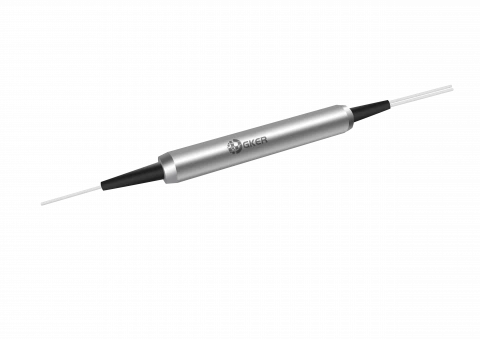Description
The GKER Photonics 2 µm Polarization Maintaining Tap Coupler (GK-PMTC Series) is a state-of-the-art optical component engineered for precision light management at a wavelength of 2000 nm. Designed with advanced technology, this coupler provides high-performance light splitting with minimal signal degradation. It allows for fine-tuning of tap ratios, including 1%, 2%, 4%, 5%, 10%, 20%, and 50%, making it versatile for various applications requiring precise optical monitoring.
This coupler excels in maintaining polarization integrity, crucial for systems where polarization-dependent effects can impact performance. The device features exceptionally low excess loss and high return loss, ensuring effective signal transmission and minimal interference. Its high extinction ratio guarantees that the split light remains consistent and stable, meeting the demands of high-precision applications.
The GK-PMTC Series coupler supports a maximum optical power of 300 mW and is built to handle high tensile loads, making it suitable for high-power fiber laser systems and other robust optical environments. Its environmental stability is notable, with reliable operation across a broad temperature range from -5°C to +70°C, and it can withstand storage temperatures up to +85°C.
Constructed with either PM 1550 Panda fiber for input and output ports or SMF-28 for tap ports, this coupler ensures superior performance and durability. Its design includes features to minimize polarization mode dispersion, enhancing overall system efficiency. This coupler is ideal for use in sophisticated optical systems where high precision and reliability are paramount, such as in advanced telecommunications, high-power fiber lasers, and scientific research applications.
2 µm Polarization Maintaining Tap Coupler
Specifications
| Type: | Other / Not Specified |
|---|---|
| Configuration: | 1x2 |
| Splitting Ratio: | Other / Not specified |
| Wavelength: | 2000 nm |
| Fiber Type: | SMF-28e |
| Connector Type: | Other / Not specified |
| Housing Material: | Other / Not specified |
| Center Wavelength: | 2000 nm |
| Operating Wavelength Range: | λc ± 40 nm |
| Configuration: | 1 × 2 2 × 2 - |
| Max. Excess Loss: | 1.2 1.5 dB |
| Max. Uniformity (only For 50%): | 0.6 0.8 dB |
| Tap Ratio: | 1 ± 0.2, 2 ± 0.4, 4 ± 0.8, 5 ± 1.0, 10, 20 and 50 % |
| Min. Return Loss: | 50 dB |
| Min. Extinction Ratio: | 18 18 dB |
| Max. Optical Power (Continuous Wave): | 300 mW |
| Max. Tensile Load: | 5 N |
| Operating Temperature: | - 5 to + 70 ℃ |
| Storage Temperature: | - 40 to + 85 ℃ |
Features
- Center Wavelength: Operates at a center wavelength of 2000 nm with an operating wavelength range of ±40 nm
- Configurations Available: 1 × 2 and 2 × 2 configurations
- Tap Ratios: Versatile tap ratios including 1%, 2%, 4%, 5%, 10%, 20%, and 50%
- Low Excess Loss: Max. excess loss of 1.2 dB for 1 × 2 and 1.5 dB for 2 × 2 configurations
- High Return Loss: Minimum return loss of 50 dB
- High Extinction Ratio: Minimum extinction ratio of 18 dB
- Optical Power Handling: Supports up to 300 mW of continuous wave optical power
- Temperature Stability: Operates effectively from -5°C to +70°C, with storage from -40°C to +85°C
Applications
- High-Power Optical Monitoring: Ideal for monitoring high-power optical sources and systems
- Fiber Laser Applications: Suitable for use with fiber lasers requiring precise light splitting
- Telecommunications: Used in advanced telecommunications for signal monitoring and splitting
- Research and Development: Valuable in research applications requiring high polarization stability and accurate light tapping
Frequently Asked Questions
What wavelengths does the GK-PMTC Series coupler support?
What coupling ratios are available for the 2 µm Polarization Maintaining Tap Coupler?
What is the maximum excess loss of this coupler?
How does the coupler maintain polarization?
What are the environmental limits for operating and storing this coupler?
What is the maximum optical power that the coupler can handle?
Can this coupler handle high peak power pulses?
What types of fiber jackets are available for this coupler?
How is the coupler’s performance affected by the type of connectors used?
What is the significance of the connector key alignment?
Similar Products


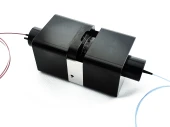
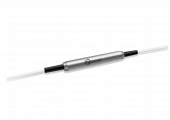
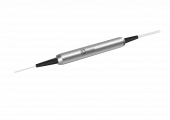

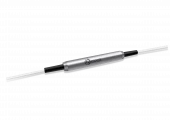
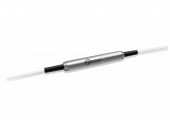


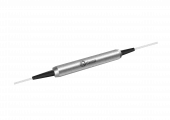

Your inquiry has been received.
Create an account by adding a password
Why create an account?
- Auto-complete inquiry forms
- View and manage all your past messages
- Save products to your favorites
- Close your account anytime — no hassle
